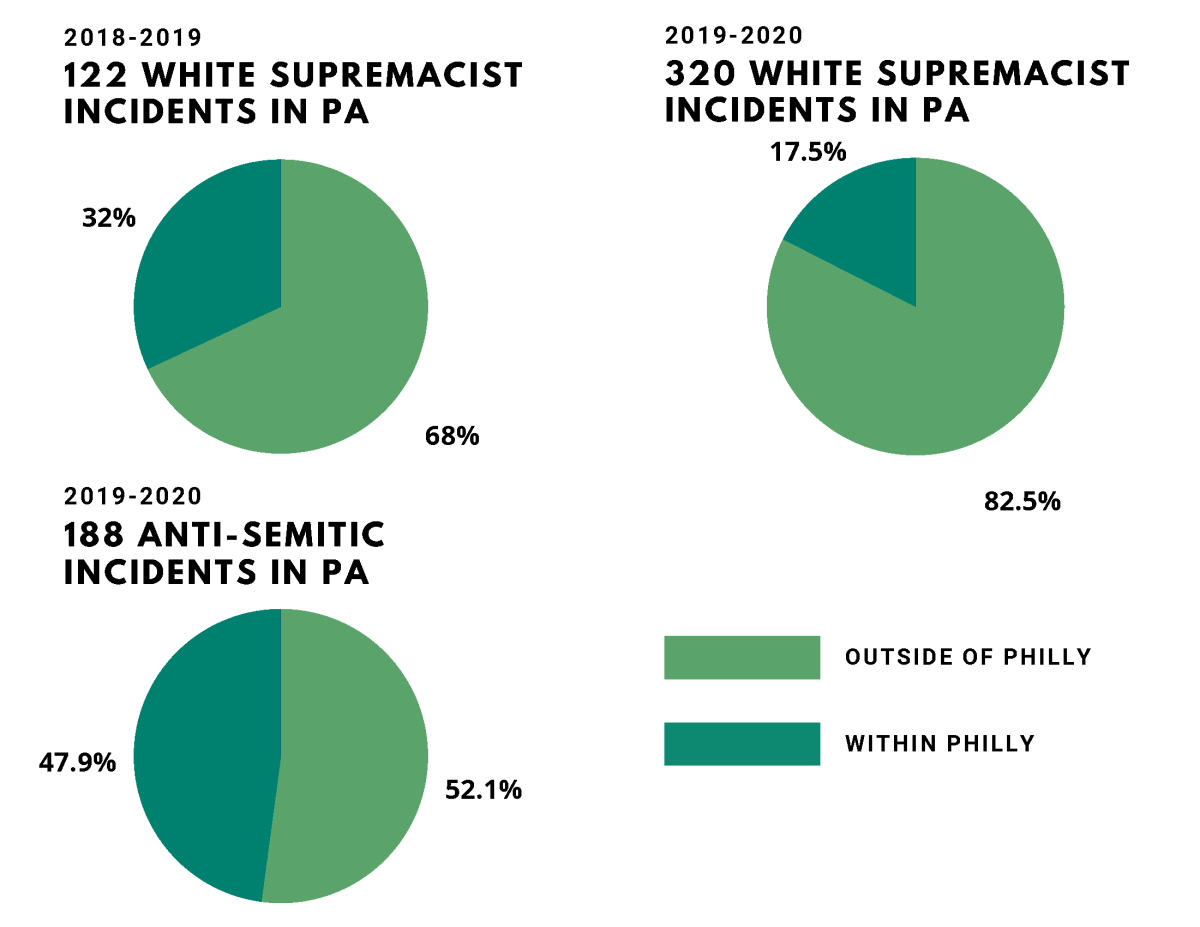Anti-Semitic graffiti was found in the second floor men’s bathroom of Barbelin Hall on Feb. 3.
A St. Joe’s faculty member notified The Office of Public Safety & Security, according to Arthur Grover, director of Public Safety. The graffiti, which was removed from the bathroom the day it was discovered, promoted propaganda by an American neo-Nazi known for anti-Semitic and white supremacist views.
Grover said Public Safety notified Student Life, the Office of Community Standards, the Office of Title IX, and Facilities Management. The incident is under investigation, but with limited evidence, Public Safety has been unable to identify a perpetrator, according to Grover.
Rabbi Alan Iser, visiting professor of theology who teaches courses on the Holocaust, said this graffiti is part of an overall increase in anti-Semitic incidents across the U.S.
“It’s part of a general trend in our society of increasing intolerance for people that are the ‘other,’” Alan said. “The massacre at the synagogue in Pittsburgh a couple years ago, a shooting in a synagogue in San Diego, an attack on a Hanukkah party last year in Monsey, New York. Physical acts of violence against Jews are increasing, as well as verbal attacks.”
In October 2018, a man yelling anti-Semitic slurs killed 11 congregants at the Tree of Life Congregation synagogue in Pittsburgh, Pennsylvania. Six months later, in April 2019, a man opened fire at the Chabad of Poway synagogue in Poway, California, killing one congregant and injuring three others. In December 2019, five people were stabbed by a man who entered a rabbi’s home during a Hanukkah party in Monsey, New York, about 30 miles from New York City.
Between 2019 and 2020, there were 188 reported incidents of anti-Semitism in Pennsylvania, 90 of which took place in Philadelphia, according to the Anti-Defamation League (ADL), which tracks incidents of hate and provides resources to fight anti-Semitism and white supremacy.
In most cases of anti-Semitic graffiti, the perpetrator is not identified, according to a spokesperson from the ADL who did not want to be named but was authorized to speak on behalf of the organization.
“Ninety-nine percent of extremists aren’t actually card carrying members of any extremist groups,” the spokesperson said. “I think he, most likely ‘he’ but it could be ‘she,’ is steeped in the ideology, but may not be necessarily an official member of a group [with a] presence on campus.”
Iser said the groups that were “the core” of the insurrection carried out by former U.S. President Donald Trump’s supporters at the U.S. Capitol on Jan. 6 have anti-Semitic tendencies. These groups, in addition to some government officials, spread anti-Semitic conspiracy theories that contribute to the national increase in anti-Semitism.
For Iser, the parallels between current events and historical ones are unsettling.
“The frightening thing to me as somebody who teaches a course on the Holocaust is that some of these things have eerie parallels to the Nazis in the 1920s and 30s before they came to power,” Iser said. “These kinds of conspiracy theories were rampant in Europe and particularly among the German National Socialist Workers’ Party.”
The graffiti found at St. Joe’s might not be labeled an exclusively anti-Semitic incident but rather an example of white supremacist propaganda, according to the ADL spokesperson. The rates of white supremacist propaganda have more than doubled every year for the last four years.
Between 2019 and 2020, there were 320 reported incidents of white supremacist propaganda in Pennsylvania, 56 of which were in Philadelphia, according to the ADL. This is an increase from 122 reported incidents between 2018 and 2019, 39 of which were in Philadelphia.
Philip Cunningham, Ph.D., director of the Institute for Jewish-Catholic Relations, said finding this graffiti at St. Joe’s is self-referential because it is a Jesuit institution.
“The Jesuits have a particular charism, promoting interreligious mutual enrichment among the different religious traditions, in particular with Judaism because of the very close roots,” Cunningham said.
But within the history of Catholicism, there is a “long tradition” of hostility towards Jews and Judaism, according to Adam Gregerman, Ph.D., assistant director of the Institute for Jewish-Catholic Relations.
“It’s really central to Catholic history, and it’s often been a way Christians have defined themselves as not Jews as far back as the first and second centuries,” Gregerman said. “But it’s a hopeful story because the Catholic Church, and others, have been at the forefront of breaking with that tradition and that history.”
Cunningham said the Jewish and Catholic faiths made progress towards building genuine friendships after the Second Vatican Council in 1965.
“The possibility of learning from each other’s different experiences and traditions is irreplaceable,” Cunningham said.
Catherine Kirwan-Avila, A.C.J., campus minister, said supporting others of different faiths aligns with St. Joe’s Jesuit mission and the principles of Catholic Social Teaching.
“To respect, acknowledge and celebrate the beauty and the truth that is found in every faith tradition is just antithetical to any sort of hate speech or discrimination against people practicing their faith,” Kirwan-Avila said.
Cunningham said St. Joe’s community members can fight anti-Semitism, and other hateful rhetoric towards minority groups, by taking action in their daily lives.
“One [action] is responding to negative things when they occur, responding and critiquing casual anti-Jewish or anti-Semitic rhetoric when it happens,” Cunningham said. “Also, taking advantage of the opportunity to really be enriched by the encounter with the other.”
Kirwan-Avila said Campus Ministry is ready to support all students, regardless of religious affiliation, in their faith journey.
“I really desire for students to be able to practice their faith, whatever that faith is, and not just feel like they’re being tolerated, but celebrated,” Kirwan-Avila said.
If anyone has information about this incident, call Public Safety at 610-660-1111.














































